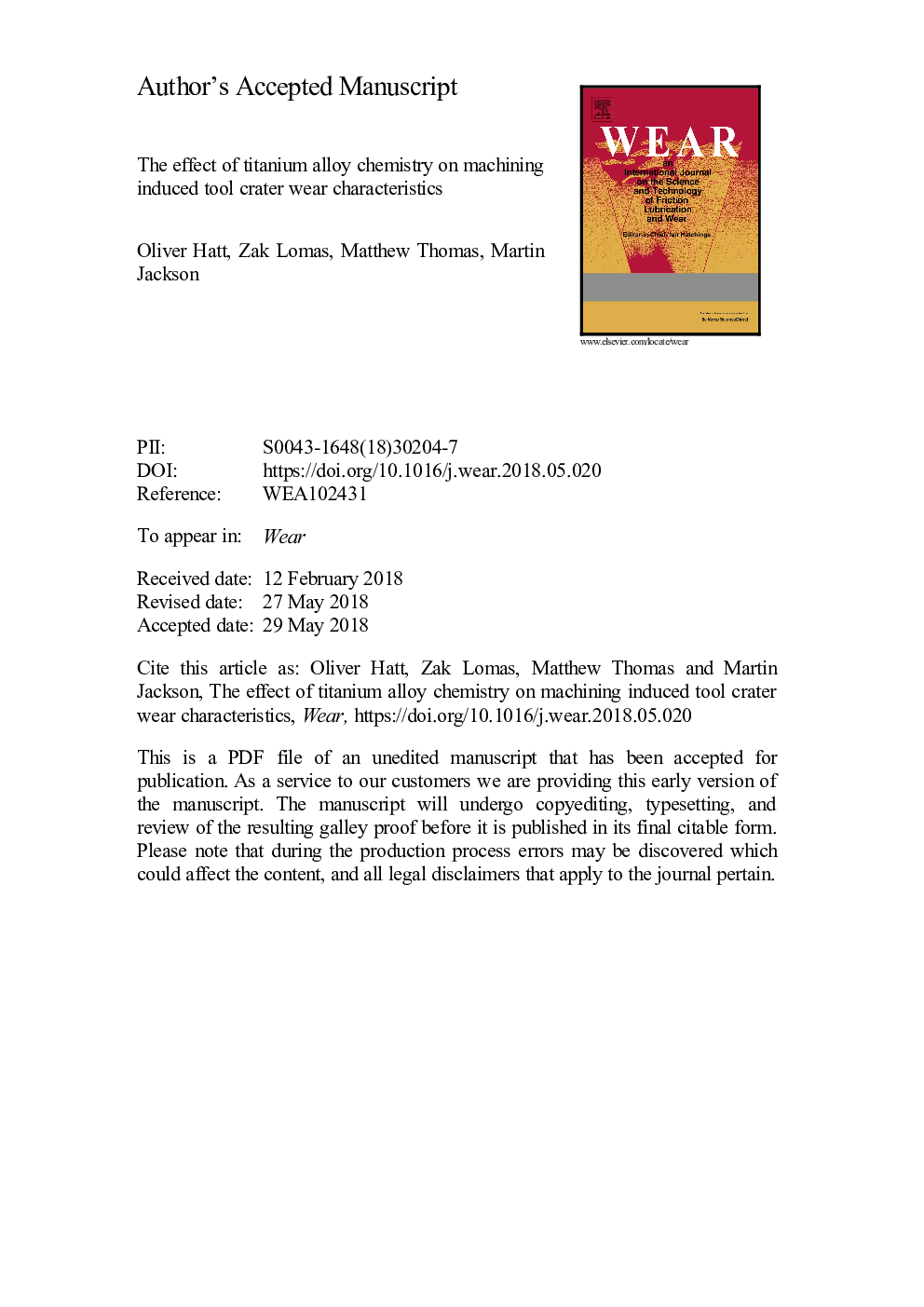| Article ID | Journal | Published Year | Pages | File Type |
|---|---|---|---|---|
| 7003811 | Wear | 2018 | 18 Pages |
Abstract
It is widely accepted that crater wear is the primary tool wear mechanism observed in titanium alloy machining. An investigation was carried out utilising a small scale, low cost diffusion couple method to determine the effect of chemistry on tool crater wear characteristics. Using a range of commercial titanium alloys, it was found that as the β stability at RT increased, the quantity of TiC formation at the reaction interface decreased. This trend allowed for the determination of the machinability characteristics of two emerging aerospace titanium alloys: TIMETAL 407 and TIMETAL 575. The former was found to be more machinable than Ti-6Al-4V, and the latter more machinable than Ti-6Al-2Sn-4Zr-6Mo. As the chemistries of titanium alloys are directly related to the rate of tool wear, the second part of this investigation examined the effect of alloying titanium with Al, Mo, Cr and V. It was found that as the concentration of these elements in the binary titanium alloys increased, the quantity of TiC formed at the reaction interface decreased. The formation of TiC has a key role on the tool crater wear mechanism during the machining of titanium alloys.
Related Topics
Physical Sciences and Engineering
Chemical Engineering
Colloid and Surface Chemistry
Authors
Oliver Hatt, Zak Lomas, Matthew Thomas, Martin Jackson,
